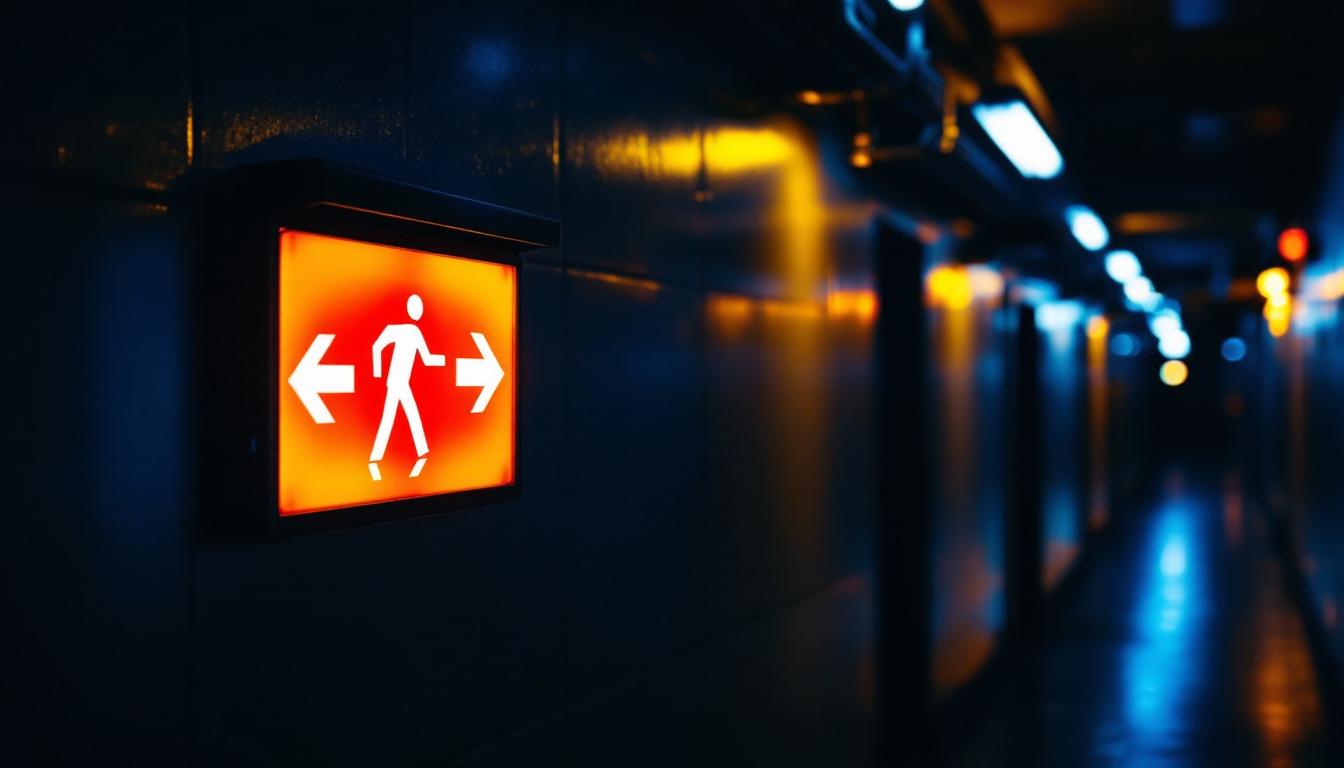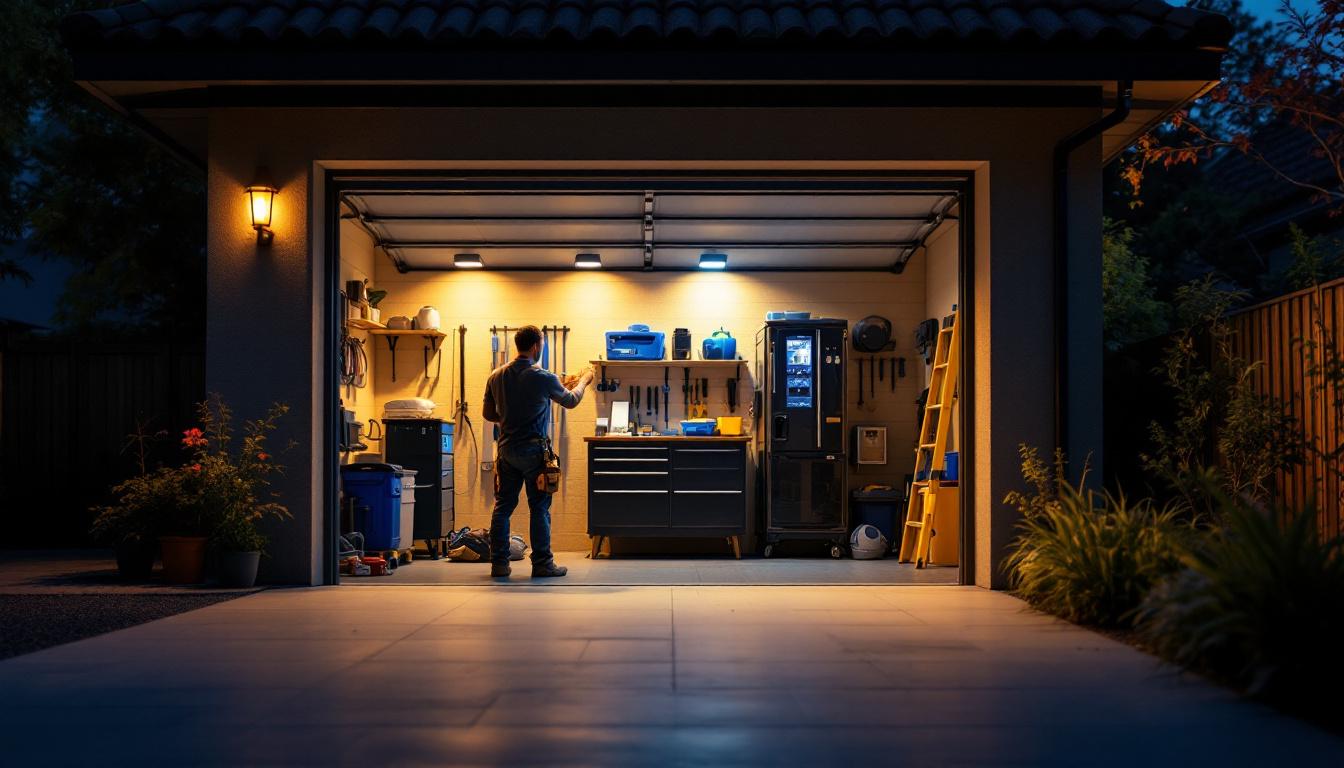
Emergency exit lighting is an essential component of any building’s safety infrastructure. For lighting contractors, ensuring these systems are correctly designed, installed, and maintained is not just about compliance—it’s about safeguarding lives during emergencies. Whether it’s a fire, power outage, or other crisis, well-functioning emergency lighting guides occupants to safety, reducing panic and preventing injuries.
Despite its importance, emergency exit lighting is often overlooked or improperly installed. This can lead to costly code violations, increased liability, and most importantly, compromised occupant safety. Contractors who understand the nuances of emergency lighting systems position themselves as trusted experts, delivering not only compliant but reliable solutions.
Moreover, the technology behind emergency exit lighting has evolved significantly in recent years. Modern systems often incorporate LED technology, which not only provides brighter illumination but also consumes less energy and has a longer lifespan compared to traditional lighting solutions. This shift not only enhances visibility during emergencies but also contributes to overall energy efficiency in buildings. Additionally, many contemporary emergency lighting systems are equipped with self-testing capabilities, allowing for automatic diagnostics to ensure that the lights are functioning correctly at all times. This proactive approach to maintenance can save contractors time and resources while ensuring that safety standards are consistently met.
Furthermore, the integration of smart technology into emergency exit lighting systems is becoming increasingly prevalent. These advanced systems can be connected to building management systems, allowing for real-time monitoring and control. In the event of an emergency, they can automatically adjust to provide optimal lighting conditions and even communicate with first responders, providing crucial information about the building layout and occupancy levels. As the landscape of building safety continues to evolve, contractors who stay informed about these advancements will not only enhance their service offerings but also play a pivotal role in ensuring the safety and well-being of building occupants.
One of the most frequent mistakes contractors encounter is insufficient planning. Emergency exit lighting must be strategically placed to illuminate all exit routes clearly. This requires a thorough understanding of the building layout, occupant load, and relevant codes such as the National Fire Protection Association (NFPA) standards and local regulations.
Failing to account for these factors can result in poorly lit exit paths, leaving occupants vulnerable in an emergency. Lighting contractors should collaborate closely with architects and safety engineers during the design phase to ensure optimal placement and coverage. Additionally, conducting a risk assessment can provide valuable insights into potential hazards and the specific needs of the building’s occupants, allowing for a more tailored lighting solution that enhances safety and compliance.
Furthermore, it is crucial to consider the types of activities that take place within the building. For instance, a facility with high foot traffic may require more robust lighting solutions than a space with infrequent use. By taking these variables into account, contractors can design a system that not only meets regulatory standards but also addresses the unique challenges of the environment.
Building codes and safety standards evolve continuously. Contractors who rely on outdated information risk installing systems that do not meet current requirements. For example, the NFPA regularly updates its Life Safety Code, which directly impacts emergency lighting specifications.
Staying current with these changes is vital. Contractors should subscribe to industry newsletters, attend training sessions, and maintain relationships with code officials to ensure their knowledge remains up to date. This proactive approach prevents costly rework and ensures client satisfaction. Additionally, engaging in professional networks or associations can provide valuable resources and insights into best practices, helping contractors stay ahead of the curve in an ever-changing regulatory landscape.
Moreover, understanding the local context is equally important. Different regions may have specific amendments to national codes that reflect local safety concerns or environmental factors. By being aware of these nuances, contractors can avoid potential legal issues and enhance the overall safety of their installations.
Emergency exit lighting must remain operational during power failures. A common pitfall is inadequate or incorrectly installed backup power sources, such as batteries or generators. If the emergency lighting fails when the main power is lost, the entire system becomes ineffective.
Contractors must verify that backup systems comply with manufacturer specifications and regulatory requirements, including minimum illumination duration and automatic switching capabilities. Regular testing and maintenance protocols should be established to guarantee reliability. This includes not only routine inspections but also comprehensive testing of the entire system under simulated emergency conditions to ensure that it performs as expected when needed most.
In addition to standard battery backups, exploring alternative power solutions such as solar-powered emergency lighting or centralized battery systems can provide added resilience. These options may offer advantages in terms of sustainability and reduced operational costs, making them worth considering in the design phase. By integrating innovative power solutions, contractors can enhance the reliability of emergency exit lighting while also contributing to the overall energy efficiency of the building.
Before installation, conduct a detailed site assessment to identify all exit routes, potential obstructions, and areas requiring illumination. This step is crucial for developing a lighting plan that ensures full coverage without unnecessary redundancy.
Utilizing advanced tools such as photometric analysis software can help contractors visualize light distribution and optimize fixture placement. This technology-driven approach enhances accuracy and client confidence in the proposed solution. Additionally, engaging with local fire marshals or safety inspectors during the assessment phase can provide valuable insights into compliance requirements and best practices specific to the building type and occupancy. Their expertise can help identify unique challenges, such as high-traffic areas or locations with limited visibility, ensuring that the final lighting plan is both effective and compliant with local regulations.
Choosing the right fixtures is essential for durability, energy efficiency, and compliance. LED emergency exit lights have become the industry standard due to their long lifespan, low power consumption, and superior brightness.
Additionally, consider fixtures with self-testing and self-diagnostic features. These innovations reduce maintenance efforts by automatically detecting faults and reporting them, allowing for timely repairs and uninterrupted operation. Furthermore, it’s beneficial to explore options that offer adjustable brightness settings or color temperature variations, which can adapt to different environments or times of day. This flexibility not only enhances visibility but also contributes to energy savings by allowing the system to operate at lower levels when full brightness is not necessary.
Proper installation techniques are fundamental to system performance. This includes secure mounting, correct wiring, and ensuring fixtures are visible from all necessary angles. Avoid placing exit signs where they may be obscured by doors or other architectural elements.
Contractors should also ensure that emergency lighting does not cause glare or shadows that could confuse occupants. Balancing brightness and uniformity is key to effective visual guidance during emergencies. It is also advisable to conduct a post-installation walkthrough with stakeholders to confirm that all exit paths are adequately illuminated and that signage is clear. This collaborative approach not only fosters a sense of safety among occupants but also allows for immediate feedback, enabling any necessary adjustments to be made before an emergency occurs. Regular training sessions for staff on the importance of exit lighting and how to respond in emergencies can further enhance safety and preparedness within the facility.
Emergency exit lighting systems require regular inspection and testing to remain compliant and functional. NFPA guidelines typically recommend monthly visual inspections and annual full-duration discharge tests.
Contractors should educate building owners on these requirements and offer maintenance contracts to manage ongoing testing. Proper documentation of inspections and repairs is also critical for regulatory compliance and liability protection.
Battery degradation is a frequent issue that can compromise emergency lighting. Over time, batteries lose their capacity to hold charge, resulting in shorter backup durations. Implementing a battery replacement schedule based on manufacturer recommendations helps mitigate this risk.
Another challenge is fixture damage or dirt accumulation, which can reduce light output. Regular cleaning and prompt repairs ensure the system performs optimally when needed.
Emerging technologies are transforming emergency lighting. Smart systems equipped with IoT connectivity enable remote monitoring, real-time fault detection, and automated reporting. These features enhance maintenance efficiency and reduce downtime.
Lighting contractors who integrate smart solutions can offer clients enhanced safety and operational transparency, differentiating themselves in a competitive market.
Energy-efficient emergency lighting not only reduces operational costs but also supports sustainability goals. LED fixtures combined with intelligent controls minimize energy consumption without compromising safety.
Contractors should highlight these benefits during client consultations, aligning lighting solutions with broader environmental initiatives and building certifications such as LEED.
Emergency exit lighting is a critical safety feature that demands meticulous attention from lighting contractors. Avoiding common pitfalls—such as inadequate planning, outdated knowledge, and poor maintenance—ensures systems perform reliably when lives depend on them.
By embracing best practices, leveraging technology, and committing to ongoing education, contractors can deliver superior emergency lighting solutions that meet regulatory requirements and exceed client expectations. This dedication not only protects building occupants but also builds lasting trust and professional reputation in the industry.
Ready to ensure the safety of your building occupants with reliable emergency exit lighting? At LumenWholesale, we provide lighting contractors with the highest quality, spec-grade lighting products at exceptional wholesale prices. Say goodbye to local distributor markups and hello to our extensive selection that meets rigorous industry standards. With free shipping on bulk orders, you can trust that you’re getting premium lighting solutions at the best value—no hidden fees, no compromises. Elevate your emergency lighting installations with the perfect combination of quality, affordability, and convenience. Wholesale Lighting at the Best Value is just a click away.

Explore the crucial role of theater lighting in enhancing safety during installations.

Discover how gooseneck lamps are revolutionizing outdoor lighting for contractors, offering enhanced functionality, energy efficiency, and aesthetic appeal.

Discover the crucial role of outdoor garage lighting in enhancing safety, aesthetics, and energy efficiency.

Discover the essential insights for lighting contractors on modern ceiling light fixtures.